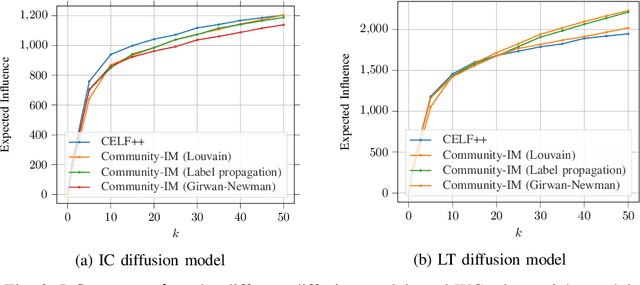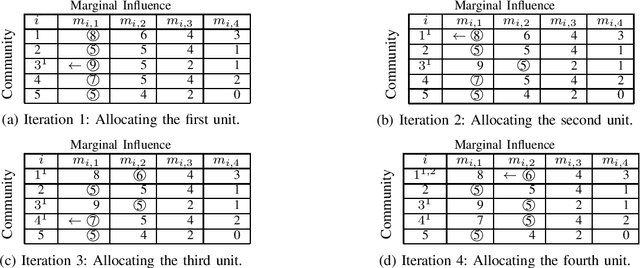A Community-Aware Framework for Social Influence Maximization
Paper and Code
Jul 18, 2022



We consider the Influence Maximization (IM) problem: 'if we can try to convince a subset of individuals in a social network to adopt a new product or innovation, and the goal is to trigger a large cascade of further adoptions, which set of individuals should we target'? Formally, it is the task of selecting $k$ seed nodes in a social network such that the expected number of influenced nodes in the network (under some influence propagation model) is maximized. This problem has been widely studied in the literature and several solution approaches have been proposed. However, most simulation-based approaches involve time-consuming Monte-Carlo simulations to compute the influence of the seed nodes in the entire network. This limits the applicability of these methods on large social networks. In the paper, we are interested in solving the problem of influence maximization in a time-efficient manner. We propose a community-aware divide-and-conquer strategy that involves (i) learning the inherent community structure of the social network, (ii) generating candidate solutions by solving the influence maximization problem for each community, and (iii) selecting the final set of individuals from the candidate solutions using a novel progressive budgeting scheme. We provide experiments on real-world social networks, showing that the proposed algorithm outperforms the simulation-based algorithms in terms of empirical run-time and the heuristic algorithms in terms of influence. We also study the effect of the community structure on the performance of our algorithm. Our experiments show that the community structures with higher modularity lead the proposed algorithm to perform better in terms of run-time and influence.
 Add to Chrome
Add to Chrome Add to Firefox
Add to Firefox Add to Edge
Add to Edge